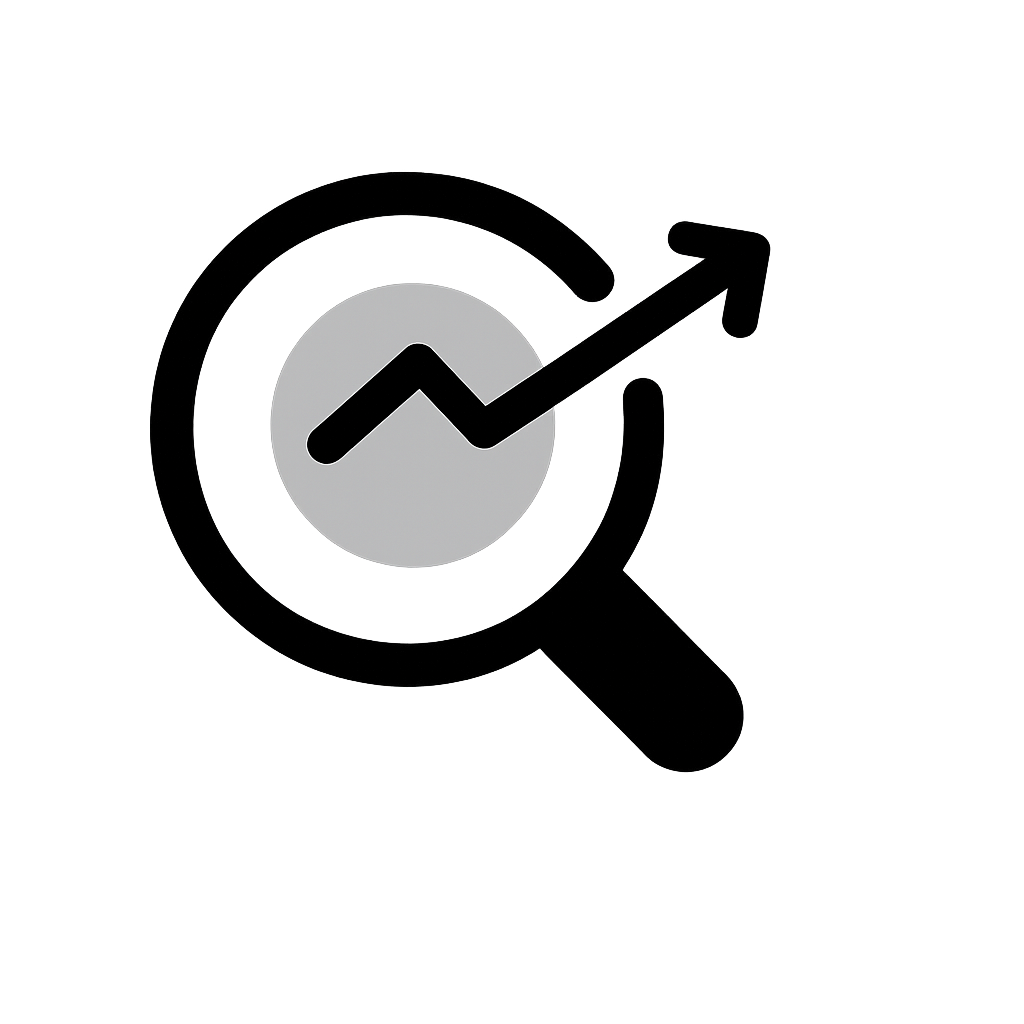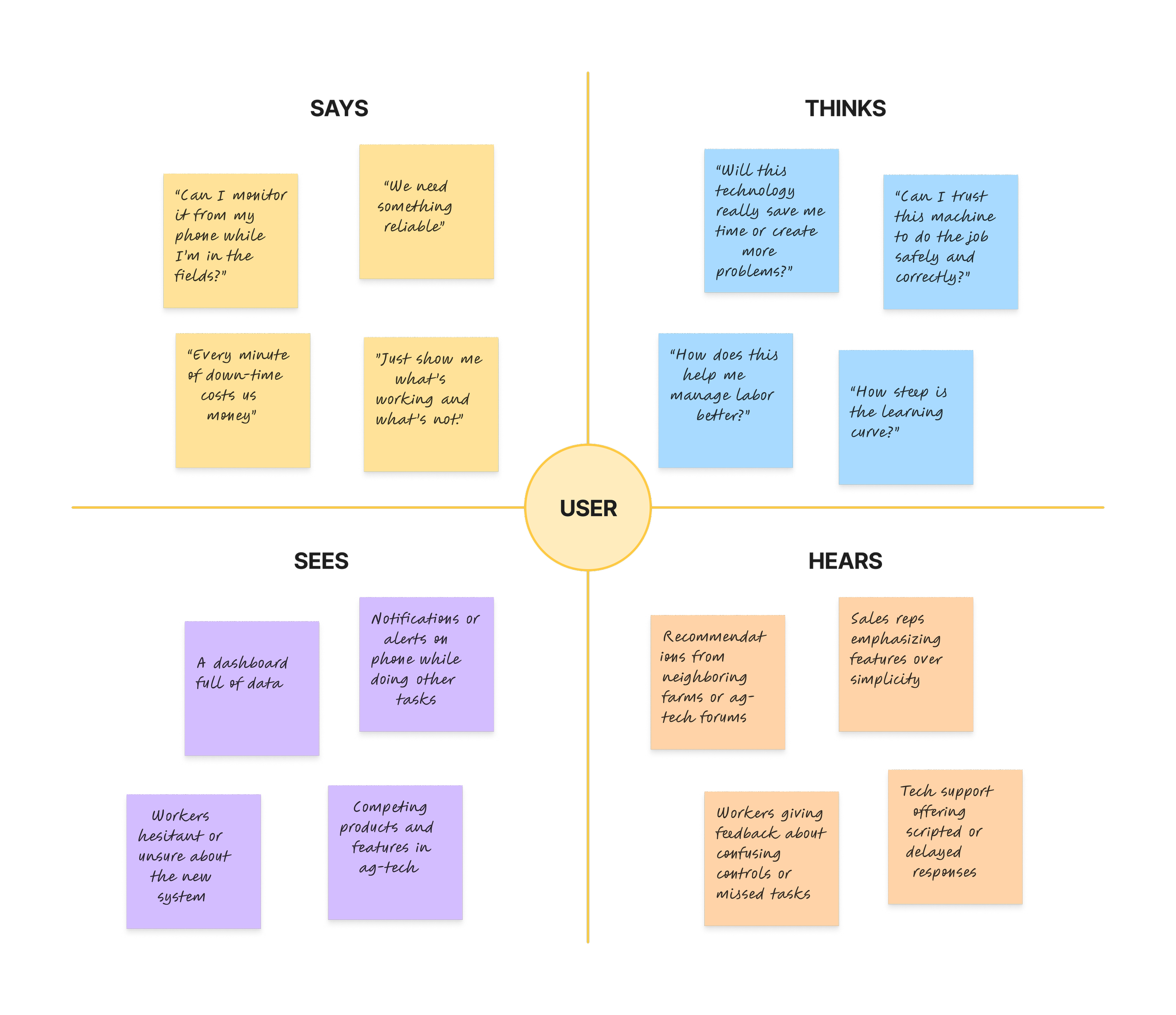CASE STUDY
Autonomous Operations:
Making Complex Processes Accessible and Easy to Use
Company
Monarch Tractor
Role
Product Design Lead
Autonomous farming has the potential to revolutionize agriculture, but setting up an autonomous tractor run can be incredibly complex. Our system enabled users to set-up and monitor autonomous farm operations from their mobile app and web portal.
THE CHALLENGE
Simplifying Autonomous Operations
How might we create a product that transforms the complex, high-stakes configurations of autonomous agricultural operations, into a clear, approachable experiences for non-technical users?
GOALS
Design an easy to understand experience that demystifies the autonomous operation
Instill trust and confidence in our autonomy system with our users
Reduce cognitive load and information overload
Minimize the chance of critical errors before initiating autonomous runs
Overly complicated processes led to confusion, while poor communication led to lack of trust.
THE PROBLEM
The autonomy setup process was too technical and complex, leading to confusion and abandoned workflows altogether.
🚩 USER PROBLEM
HYPOTHESIS I
A guided walk through with simplified steps would lead users through the setup of an autonomous operation step-by-step, making choices clear and reducing the chance for errors.
The unclear directives, information overload, and poor operational transparency, were causing loss of trust in the product and company.
🚩 BUSINESS PROBLEM
HYPOTHESIS II
Delivering information through progressive disclosure floats the most important information to the top, nesting less critical info 1 or 2 clicks deep. This allows users to quickly and clearly understand how the operation is going, instilling trust in the system.

UX Approach
Research & Discovery
Researched the technical processes required to make autonomous operations possible, getting a full picture of the capabilities and limitations of the hardware and software systems.
Interviewed users on their current operational practices and processes, getting a deep understanding of their needs and pain points.
Asked users to rank level of importance to the operational data, getting a better understanding of what matters most to their work.
Mapped potential use cases and scenarios in collaborative boards, translating technical challenges with actionable design insights.
Definition & Ideation
Mapped out user journeys to highlight major friction points and user needs, working closely with Product Managers and Engineering to define product requirements and capabilities.
Designed workflows and interfaces for autonomous operation set-up and monitoring, representing relative workflows clearly.
Applied progressive disclosure principles to guide users gradually through complex workflows.
Defined UX heuristic guidelines to help designer and product managers keep track of good UX practices, and guide QA testing efforts.
Testing & Refining
Using Human Centered Design Methodology, we validated our design theories and solutions with user feedback and in–field testing against PRDs and UX heuristic guidelines.
Used hi-fi prototypes to test with real users, refining our workflows and designs according to our findings.
Included useful tool-tips and product update walk-throughs to help users discover new capabilities.
Compiled user feedback and tracked bug fixes, refining our designs through iterative testing, ensuring every update addresses real user needs.
💡 SOLUTION I
Guided Setup Flow
Leading users through the setup of an autonomous operation step-by-step, while using clear copywriting paired with intuitive visuals, and optimizing the flow to have the least number of steps, enforced clarity and trust in the system. Automating key steps in the process reduced mistakes and made the setup quicker and easier.
Outcomes
✅ Ensuring each step was self-contained built user confidence
✅ Ability to deploy an autonomous operation in under 5 minutes.
✅ Clear instructions reduced critical mistakes substantially
💡 SOLUTION II
Progressive Disclosure
Presenting only the most essential information upfront and revealing more complex options as needed prevents information overload. This streamlined the user experience, resulting in higher task completion rates and increased user satisfaction.
Outcomes
✅ Reduced cognitive load allowed monitoring of multiple operations at once
✅ 40% increase in feature adoption
✅ Rated high in ease of use in heuristic testing
OTHER UX PRINCIPLES USED
Conversational UX
Clear, supportive copywriting supported by intuitive icons
Affordances & Feedback
Live previews, confirmations, and error handling
Fail-safes & Alerts
Warnings, back and “undo” options built into each stage
EMPATHY MAPPING
Understanding The Users
Empathy mapping helped our team deeply understand the real-world context, goals, and frustrations of our users. By aligning cross-functional teams around a shared understanding of user needs and mindsets, we were able to identify usability gaps, prioritize meaningful features, and design more intuitive experiences across the mobile app, web portal, and in-vehicle interface.
Users expect reliability in the system
TECHNICAL CHALLENGE
🚩 PAIN POINT
Operational efficiency ranked very high for users, unplanned stops waste valuable time and recourses. However, when operating down a row of crops there isn't much room to maneuver around obstacles blocking the vehicle’s path. It was vital
SOLUTION
A robust alerts and notification system paired with supporting images and video feeds gets the users attention quickly and aids them in making a decision quickly and easily. All notifications should be clear and paired with actionable directions.
Clear and transparent communication keeps users in the loop, instilling trust in the system
When it come to autonomy, trust is everything
RETROSPECTIVE
Automating and simplifying processes through progressive disclosure can make a complex operations easy to grasp
Clear steps, visual feedback, and well-timed guidance turn a daunting task into an approachable and empowering one.
Clear communication with meaningful insight into the process builds trust with users, and manages
To comply with my non-disclosure agreement, I have omitted and obfuscated confidential information. All information is my own and does not necessarily reflect the views of Monarch Tractor.











